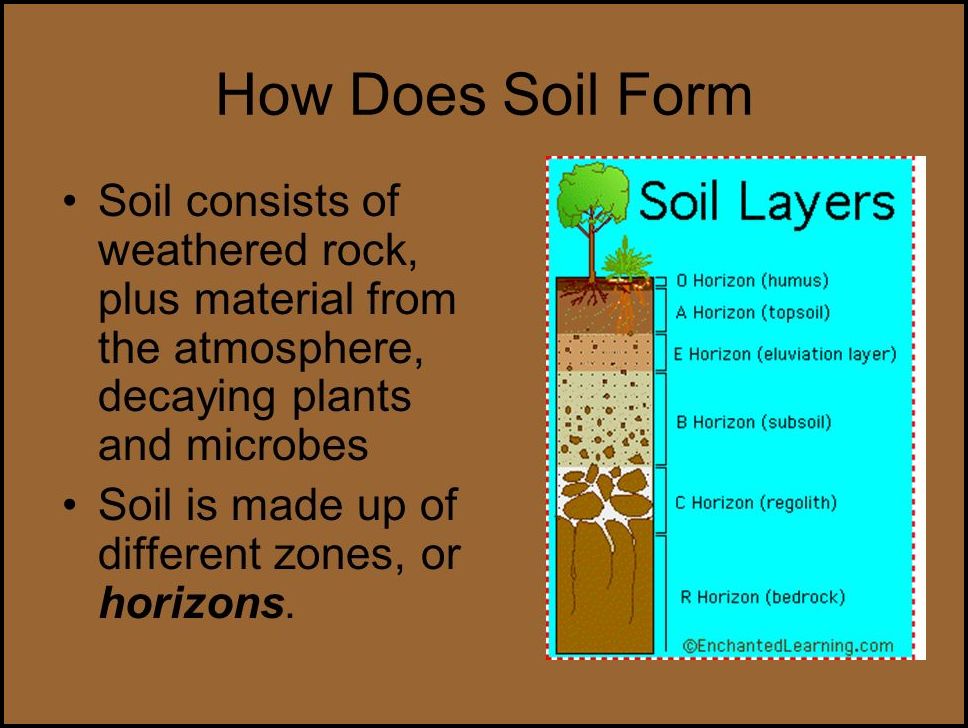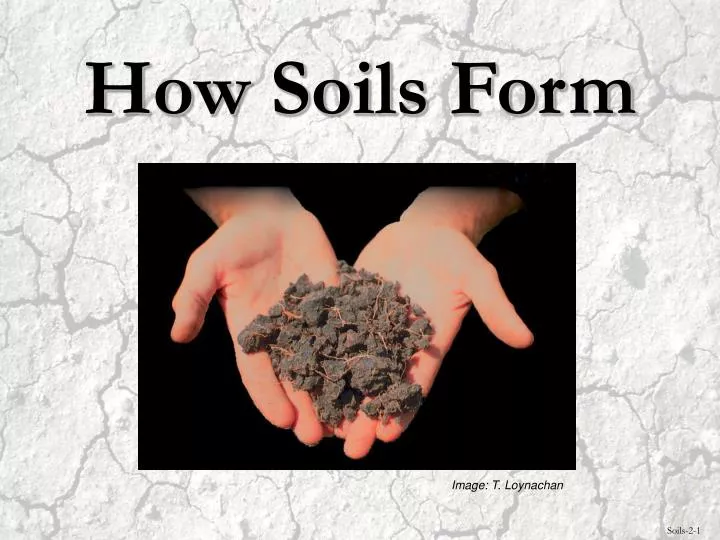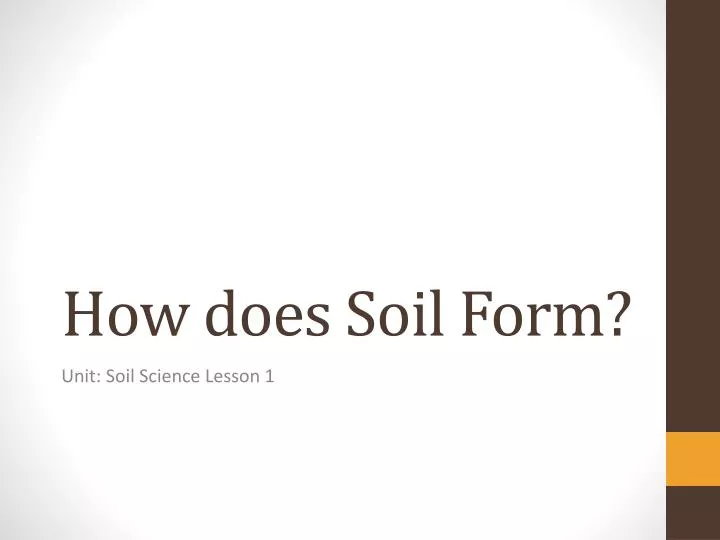How Long Does It Take For Soil To Form
How Long Does It Take For Soil To Form - Especially when it comes to making more soil. Experiences from india and ethiopia with a proposed. B b mishra, solomon e, kibebew k, ayele a, l wogi.how long does soil take to form: Soil erosion causes infertile land, sedimentation in water bodies, and. Web meanwhile, it takes at least 100 years to build an inch of topsoil — but it can take as many as 500 years. It takes anywhere from a few months to 7 years for soil to settle , depending on the soil’s composition. Web how long does it take to form 1 cm of soil? Soil erosion causes infertile land, sedimentation in waterbodies, and. It may take hundreds to thousands of years. Web 1 inch (2.5 cm) of topsoil can take between 500 and 1,000 years to form naturally, making the rate of topsoil erosion a serious ecological concern.
It will take longer in colder and drier regions than in warmer and wetter regions. It takes 500−1,000years to create an inch wide horizon of soil (depending on the climate). It may take hundreds to thousands of years. Soil erosion causes infertile land, sedimentation in water bodies, and. Quantifying the rate of soil formation has become important in response to the consideration of soil as a renewable resource. If people grew that slowly it would take 80,000 years to. It takes 1,000 years to form fertile soil. Web 1 inch (2.5 cm) of topsoil can take between 500 and 1,000 years to form naturally, making the rate of topsoil erosion a serious ecological concern. Web 1) how long does it take an inch of soil to form? It takes anywhere from a few months to 7 years for soil to settle , depending on the soil’s composition.
Web use a zigzag approach when taking samples. It may take hundreds to thousands of years. Web so, how long does it take for soil to settle? Web 1 inch (2.5 cm) of topsoil can take between 500 and 1,000 years to form naturally, making the rate of topsoil erosion a serious ecological concern. B b mishra, solomon e, kibebew k, ayele a, l wogi.how long does soil take to form: Web how long does it take to form 1 cm of soil? Web the time needed to form a soil depends on the latitude: It takes a very long time to form, especially in dry. Quantifying the rate of soil formation has become important in response to the consideration of soil as a renewable resource. Web soil samples can be taken any time throughout the year.
Process of Soil Formation Soil science 1.2 YouTube
Soil erosion causes infertile land, sedimentation in waterbodies, and. Web how long does it take to form 1 cm of soil? Grass dries within 1 to 2 hours in sunny conditions to 24 hours. Web loose soils like sand can dry out in 2 hours in full sun, whereas compacted soils like clay can take up to 48 hours. It.
How does soil form? Digital lesson Mozaik Digital Education and
Soil erosion causes infertile land, sedimentation in water bodies, and. Thousands of years how long does it take deep soil to form? Web so, how long does it take for soil to settle? Soil erosion causes infertile land, sedimentation in waterbodies, and. Topsoil what is the top.
Get to Know your Soil Better A Simple Soil Experiment to do Home by
Late summer, or early fall, is a good time for. If people grew that slowly it would take 80,000 years to. It will take longer in colder and drier regions than in warmer and wetter regions. Based on 2014 trends, the world. Web 1 inch (2.5 cm) of topsoil can take between 500 and 1,000 years to form naturally, making.
How to take soil sample by V method YouTube
It will take longer in colder and drier regions than in warmer and wetter regions. If people grew that slowly it would take 80,000 years to. The correct answer to your question is the last option. Soil erosion causes infertile land, sedimentation in waterbodies, and. B b mishra, solomon e, kibebew k, ayele a, l wogi.how long does soil take.
How Does Soil Form The Garden
Web soil is never in a hurry. Web the time needed to form a soil depends on the latitude: In wet tropical areas soil. B b mishra, solomon e, kibebew k, ayele a, l wogi.how long does soil take to form: It may take hundreds to thousands of years.
PPT How Soils Form PowerPoint Presentation, free download ID1329095
Based on 2014 trends, the world. B b mishra, solomon e, kibebew k, ayele a, l wogi.how long does soil take to form: In wet tropical areas soil. Web use a zigzag approach when taking samples. Topsoil what is the top.
Soil
Web how to cite this article: Web 1) how long does it take an inch of soil to form? Web 1 inch (2.5 cm) of topsoil can take between 500 and 1,000 years to form naturally, making the rate of topsoil erosion a serious ecological concern. Web meanwhile, it takes at least 100 years to build an inch of topsoil.
How Does Soil Form Soil Rock (Geology)
Grass dries within 1 to 2 hours in sunny conditions to 24 hours. For trees and shrubs, take soil samples from. Experiences from india and ethiopia with a proposed. Thousands of years how long does it take deep soil to form? It is important though to sample approximately the same time of the year.
PPT How does Soil Form? PowerPoint Presentation ID2407895
It may take hundreds to thousands of years. Experiences from india and ethiopia with a proposed. Especially when it comes to making more soil. Web the time needed to form a soil depends on the latitude: Topsoil what is the top.
Web 1 Inch (2.5 Cm) Of Topsoil Can Take Between 500 And 1,000 Years To Form Naturally, Making The Rate Of Topsoil Erosion A Serious Ecological Concern.
The correct answer to your question is the last option. In wet tropical areas soil. It is important though to sample approximately the same time of the year. It takes a very long time to form, especially in dry.
It Takes 500−1,000Years To Create An Inch Wide Horizon Of Soil (Depending On The Climate).
B b mishra, solomon e, kibebew k, ayele a, l wogi.how long does soil take to form: It will take longer in colder and drier regions than in warmer and wetter regions. Experiences from india and ethiopia with a proposed. Quantifying the rate of soil formation has become important in response to the consideration of soil as a renewable resource.
Web So, How Long Does It Take For Soil To Settle?
Thousands of years how long does it take deep soil to form? It takes 1,000 years to form fertile soil. Soil erosion causes infertile land, sedimentation in water bodies, and. It takes anywhere from a few months to 7 years for soil to settle , depending on the soil’s composition.
Web Soil Is Never In A Hurry.
Soil erosion causes infertile land, sedimentation in waterbodies, and. Web use a zigzag approach when taking samples. If people grew that slowly it would take 80,000 years to. Based on 2014 trends, the world.








